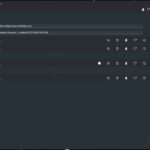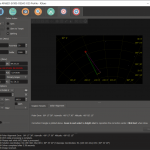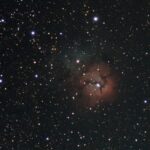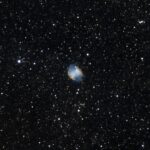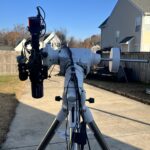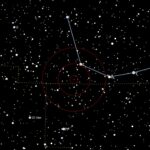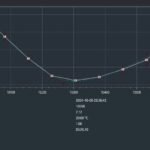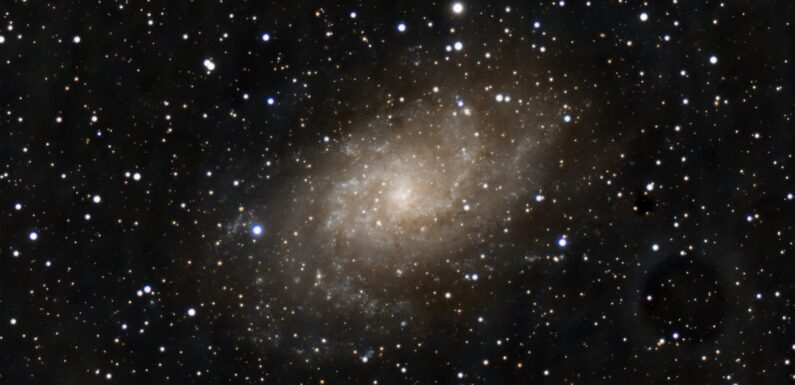
Another clear night. That’s two in a row! Clear and cool, a little bit of haze off to the east, that cleared up a bit later. Another nice night to look up. This is the first time I have done an “unattended” session… After polar alignment and initial focus I kicked off the NINA Sequence and let it go. Captured 30 minutes of T CrB and then 4 hours of M33, the Triangulum Galaxy. After the capturing 80 x 180 seconds of exposures the scoped parked and the camera warmed. I set up an alternate park position to park the scope with the front objective lens facing down, hoping to keep the dew and dust off… it worked out great! I only checked on it a couple of times.
| Primary (Imaging) | Secondary (Guiding) |
|---|---|
| Scope: SVBONY SV503 102ED Reducer/Flattener: 0.8 Focal Reducer/Flattener (~570mm – F/5.6) Filter: None Camera: ZWO ASI294 MC Pro, Cooled to -10 C Focuser: ZWO EAF Mount: Sky Watcher EQ6-R Pro |
Scope: SVBONY SV106 60mm Guide Scope Camera: Orion Star Shooter Autoguider (OSSAG) |
| Telescope Control, Image Acquisition, and Image Processing Software | |
|
Equipment Control and Imaging Software: NINA/PHD2/ASCOM on a Mini-PC Processing Software: GraXpert, Siril astronomical image processing tool, Siril’s Interactive Companion (Sirilic) |
|
After dark I cooled down the camera to -10, checked the polar alignment, it was pretty close but I dialed it in a bit, and then did an initial autofocus run. At 9 PM I kicked off the NINA Sequence. The NINA sequence captured 30 minutes (15 x 120 seconds) of T CrB. The scope then slewed over to Messier 33 to capture light for a few hours. I got the grandkid ready for bed, watched some TV, and went to sleep. About 4 1/2 hours after starting the sequence the scope parked and the camera warmed.
Messier 33 (M33), the Triangulum Galaxy, in the constellation of Triangulum. This is 80 x 180 second exposures, 4 hours total, at 121 gain, 30 offset, and bin 2×2. Exposures were stacked with darks using Sirilic. Background extraction and denoising with GraXpert. Final processing with Siril.
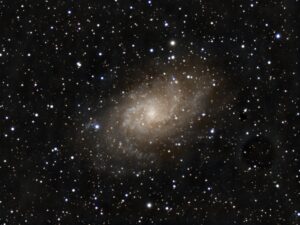
M33 is about 3.2 Million Light Years away and has diameter of about 61,100 Light Years. It is about 70% the size of Milky Way and is home to around 40 billion stars.
It could use flats as there are a couple of dust motes… but over all I think it looks pretty nice. I like looking at it anyway.
This set it and forget it set up makes it a bit easier to look up on a school night… so more to come. I’ll write up a post on how I set up the park position in the next couple days.
Clear skies.


